The Tower of London has been many things through its over 900 years of history. Royal palace, fortress, menagerie, armoury, treasury, Royal Mint, public record office, and now, a tourist attraction.
Given the sheer amount of death, torture, and violence associated with the building, ghosts are somewhat inevitable.
And the Tower boasts a whole range of ghosts. The Lost Princes, Anne Boleyn, Lady Jane Grey, and Sir Walter Raleigh are among the most notable (Westwood 2005: 485). A Cavalier apparently haunts a set of battlements connected to the Beauchamp Tower. Lord Guildford Dudley apparently haunts this tower itself, frantic and in tears (Paranormal Database 2023). Screams issue from the Council Chamber in which Guy Fawkes was held.
It would be impossible to do all the Tower of London ghosts justice in one post. So we’ll focus on some of its best-known phantoms!
Anne Boleyn
Anne Boleyn was executed in 1536 on Tower Green, having been found guilty of treason on somewhat trumped up charges. According to reports from the 19th and 20th centuries, people have seen her ghost on Tower Green, but also in the White Tower’s Chapel Royal. The latter is unsurprising, given she was buried under the Chapel altar.
This might explain one of the most famous sightings of her. A captain and a sentry were doing the rounds at night when they reached the Chapel Royal and found it lit up (O’Donnell 1932: 5). The sentry confirmed there was no service underway, but that he and the other night sentries had seen the light in the chapel before.
The captain decided he wanted to know what was going on. The sentry fetched a ladder, and the captain climbed up to look through a window.
A blue-white light “emanating seemingly from nowhere” lit the chapel (O’Donnell 1932: 6). A procession of women and men in Tudor dress made their way down the central aisle. The captain recognised the woman leading the procession: Anne Boleyn. They all walked in silence, eyes straight ahead. When the procession reached the end of the aisle, they followed a side aisle back to the doors and made their way down the central aisle again. This happened a few times until the procession vanished, and the light snapped out. The captain never saw the phantom procession again (O’Donnell 1932: 7).
In 1864, a sentry faced a court martial for apparently deserting his post near the Queen’s House thanks to Anne Boleyn. Surprisingly, he avoided punishment when he gave an explanation. According to him, a white shape had approached him in the mist. When he demanded it identify itself, it remained silent and continued bearing down on him. He lashed out with his bayonet but it went through the figure, and he realised it was Anne Boleyn. He left his post, he explained, out of sheer panic (Westwood 2005: 485). Two witnesses who had been watching from the Bloody Tower corroborated his story. Other sentries have also seen the figure outside the Queen’s House (Abbott 1992: 49).
The Ghostly Tube
One story takes us to a Saturday evening in October 1817. Edmund Swifte lived with his family in the Jewel House, thanks to his position as the keeper of the Crown Jewels. On this particular evening, he sat at supper with his wife, their 7-year-old son, and Mrs Swifte’s sister. The doors were closed against the wintry night outside, and they ate by candlelight.
Just after the stroke of midnight, Mrs Swifte suddenly looked up and cried, “Good God! What is that?” A glass-like tube hung in mid-air between the ceiling and the table. According to Edmund, it was as thick as his arm and contained two types of fluid: one white, the other light-blue. As they watched, the two coloured fluids kept mixing, and then separating, for about two minutes.
The tube then floated across the table towards Mrs Swifte, positioning itself above her right shoulder. Her hands flew to her shoulder, and she cried that it had seized her.
Edmund swung into action, picking up a chair and swinging it at the tube. The chair passed through the tube, colliding with the wall. A second or so later, the tube vanished. It seems from the record that only Edmund and Mrs Swifte saw the tube. Their son and Mrs Swifte’s sister saw nothing.
According to Elliott O’Donnell, who related the tale, Edmund then investigated what had happened, and concluded that he couldn’t explain what they’d seen “with any known physical laws” (1932: 3). O’Donnell stresses that Edmund was not psychic, nor interested in such phenomena, so I would like to know what he did to analyse the events. As it is, this was the only phenomenon he experienced himself while he worked at the Tower.
The Phantom Bear
Edmund Swifte also appears in another ghost story from the Tower of London, although here, he only verified the event, rather than being in it.
In January 1816, a sentry paced outside the Jewel House at midnight. He noticed something coming up the steps under the building. The sentry couldn’t work out what it was, only that it wasn’t human.
A cloud passed away from the moon, illuminating the scene, and the sentry saw with horror that the advancing creature was a huge bear. He lashed out with his bayonet, which passed straight through the bear, striking the wall beyond. When the action failed to stop the advancing bear, the sentry fainted.
Edmund wrote about the event the following day. A fellow sentinel reported he’d seen the sentry just before the event, awake and alert, thus removing the possibility that the sentry might have dozed off. Edmund got the story from the sentry himself, and the following day, the sentry was “changed beyond recognition”. Even worse, “the brave and steady soldier” died a couple of days later (O’Donnell 1932: 4).
O’Donnell notes the bear was most likely a ghost of one kept in the Tower for bear baiting. Having experienced extreme trauma in its life, it became an angry spirit in death (1932: 5).
The Bloody Tower
People have seen what they believe to be the lost Edward V and his younger brother Richard in the Bloody Tower. They hold hands and hide in different rooms. Two Coldstream Guards reported hearing children giggling outside the tower in 1990 (Paranormal Database 2023). Was it the princes, in an echo of slightly happier times?
Sir Walter Raleigh apparently wanders around the Bloody Tower too. Under the Tudor monarchy, he enjoyed the patronage of Elizabeth I. Once James I ascended to the throne, Raleigh fell from grace and ended up in the Bloody Tower for thirteen years.
Given his role in colonising North America and suppressing Irish rebellion in 1579 and 1580, that seems somewhat fitting.
He would promenade on Raleigh’s Walk, the battlements adjoining the tower. Always dressed well, people, merchants and ambassadors all loved Raleigh. Unfortunately, Philip of Spain demanded Raleigh’s execution as part of a peace treaty with Britain, and James acquiesced. After all, Raleigh had plundered a lot from Spanish ships. He met his end on 24 October 1618 at Old Palace Yard in Westminster (Abbott 1992: 39).
Despite his execution taking place in Westminster, it seems his ghost prefers the Tower of London. Witnesses have seen him drifting through the Bloody Tower, or along Raleigh’s Walk. The Walk used to be longer and reached the Lieutenant’s Lodgings. Later, the authorities built houses over the battlements for the yeoman warders and their families. In 1976, a yeoman warder’s wife reported feeling a hand brush her back in the bathroom. Yes, you guessed it; the bathroom stood along Raleigh’s old route. Apparently, the wife was made of stern stuff and chastised Raleigh, before continuing with her bath! (Abbott 1992: 40)
A woman in a long black velvet dress, with long hair, also haunts the Bloody Tower. A tourist spotted her standing by a window in 1970, before she faded away. The tourist returned and saw the woman in the same place. She could watch her for long enough that she could describe the woman’s white cap and gold medallion (Abbott 1992: 40). No one knows who she is, but her appearance at the same window suggests she’s more of an echo, or a replay, than an active phantom.
Other Tower of London Ghosts
Lady Jane Grey appears on her execution’s anniversary, always taking the form of a white shape (Westwood 2005: 485). How she’s distinguishable from the white shape of Anne Boleyn is beyond me.
Not all Tower of London ghosts are famous royals. Various figures wearing costumes from different periods parade around the site, as well as the inevitable ghostly monks (Westwood 2005: 485).
A Grey Lady walks through the Queen’s House, though she is only ever seen by women (Abbott 1992: 49). One of the rooms next to the one in which Anne Boleyn spent her final days is apparently markedly colder than other rooms around it. A strange smell, like perfume, lingers, yet no one can find its source. For a time, any young child that slept in the room woke to the sensation of being suffocated (Abbott 192: 51).
Other ghosts are heard rather than seen, because people report sighs, groans, screams, and footsteps (Westwood 2005: 485). Elliott O’Donnell notes that the many rats in the Tower, and the sounds of the nearby Thames, might explain some of the noises, if not the strange sights in the Tower (1932: 8).
What do we make of these Tower of London ghosts?
Ultimately, it depends upon what you think causes ghosts. If you subscribe to the widely debunked stone tape theory, then you might think the ghosts are merely echoes of past events. They’re not really there, they’re simply replaying what once happened.
Or maybe you prefer the theory that people haunt where they spent the bulk of their time. That would certainly explain why Sir Walter Raleigh still haunts the place he called ‘home’ for thirteen years.
Perhaps you think that enough people have heard the stories, that someone is bound to see something. And with tourists around during the day, and yeoman warders on site at night, there are plenty of potential witnesses.
Who knows? Maybe the sheer amount of violence and death on the site for over nine centuries is bound to create some kind of blip in London’s psychic landscape?
Which is your favourite among the Tower of London ghosts? Let me know below!
References
Abbott, G. (1992), Ghosts of the Tower of London, Nelson: Hendon Publishing.
O’Donnell, Elliott (1932), Ghosts of London, London: Philip Allan.
Paranormal Database (2023), ‘Ghosts, Folklore and Forteana of London’s EC3 District’, Paranormal Database, https://www.paranormaldatabase.com/hotspots/EC3.php.
Westwood, Jennifer and Simpson, Jacqueline (2005), The Lore of the Land: A Guide to England’s Legends, London: Penguin.
Nutty about folklore and want more?
Add your email below and get these posts in your inbox every week.
You'll also get my 5-step guide to protecting your home using folklore!

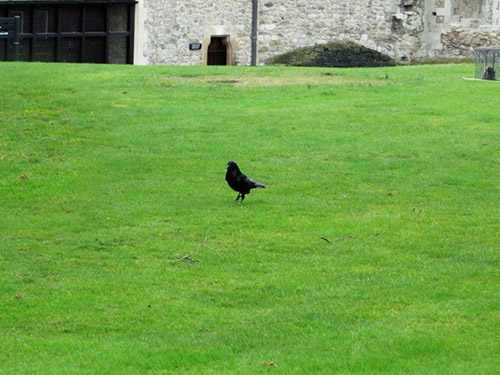
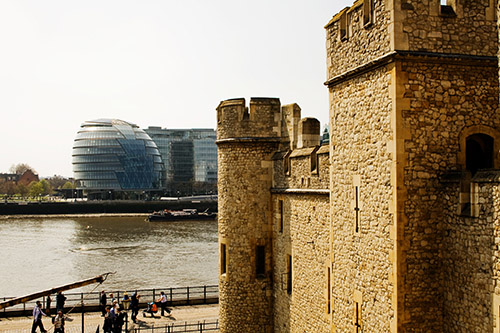
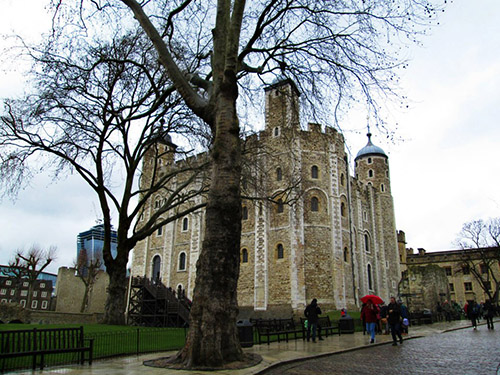
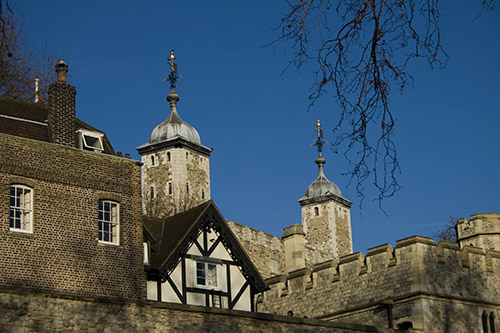
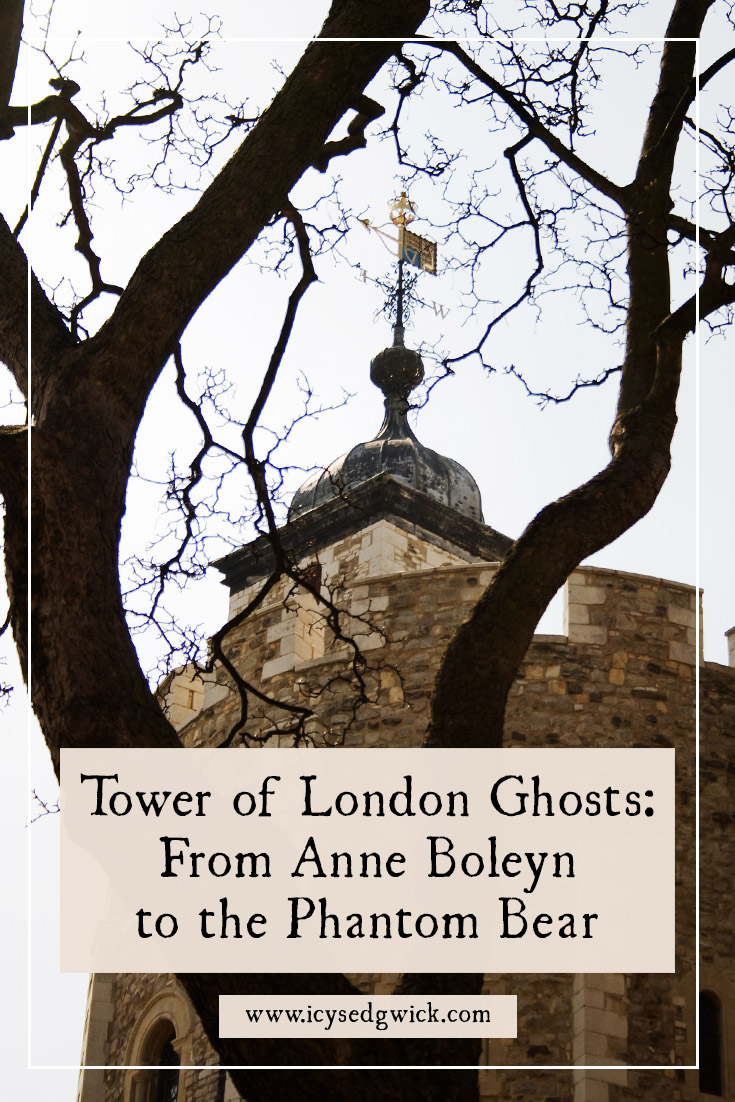





Have your say!